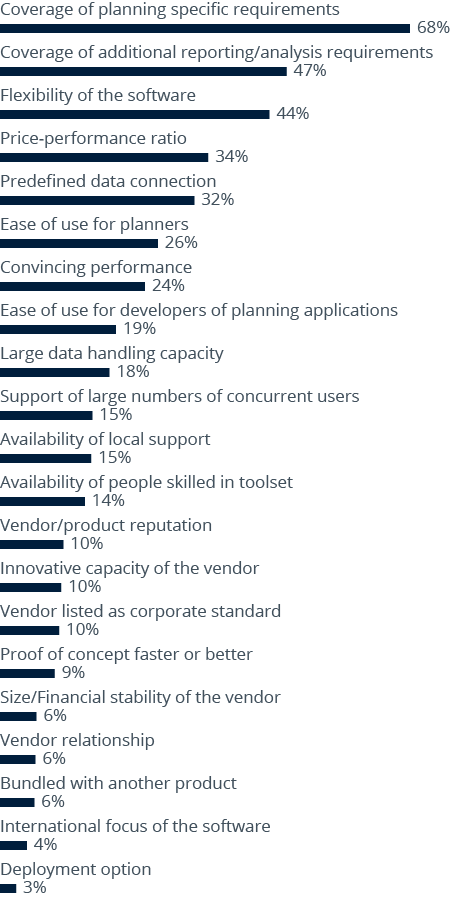In a previous article, we looked at how companies go about selecting planning and budgeting tools. But what are the main reasons for ultimately deciding to buy them?
Unsurprisingly ‘coverage of planning-specific requirements’ is the main reason why companies buy a planning and budgeting product (68 percent chose their product because of its planning functionality). However, there are other reasons for choosing planning tools. The next most popular reasons are as follows:
- ‘Coverage of additional reporting/analysis requirements’ (47 percent)
- ‘Flexibility of the software’ (44 percent)
- ‘Price-performance ratio’ (34 percent)
- ‘Predefined data connection’ (32 percent)
According to BARC’s Advanced Planning Survey, integrated planning is the most beneficial planning approach in terms of improving the quality of planning results for many companies.
In our opinion, integrated planning covers not only the integration of strategic planning with operational planning, or the integration of different sub-budgets with financial results planning, but also the integration of planning and BI.
Therefore, the importance of additional reporting/analysis functionality within a planning product is paramount here. Planning is almost impossible without reporting and analysis capabilities, so the integration of planning with reporting, analysis and dashboards is essential.
To address integrated planning and budgeting properly, a planning product has to have a degree of flexibility to cover all facets of the integrated approach. Price-performance ratio is also important in most software selection projects, especially in a highly competitive area like the planning and BI tools market. Offering flexible and feature-rich software at an attractive price point can be a key factor in convincing customers.
Vendor-related reasons like ‘size/financial stability of the vendor’ (6 percent), performance in a proof of concept scenario (9 percent) and ‘vendor/product reputation’ (10 percent) seem to play a minor role for many companies when selecting a planning and budgeting tool.
For further insights see The Planning Survey 16.






